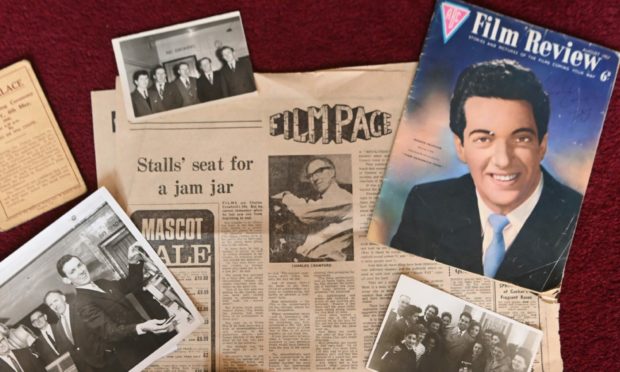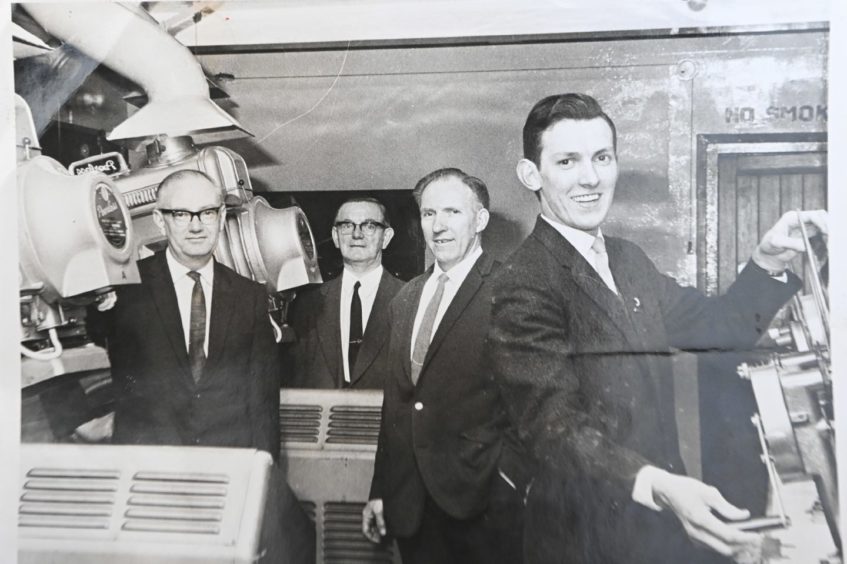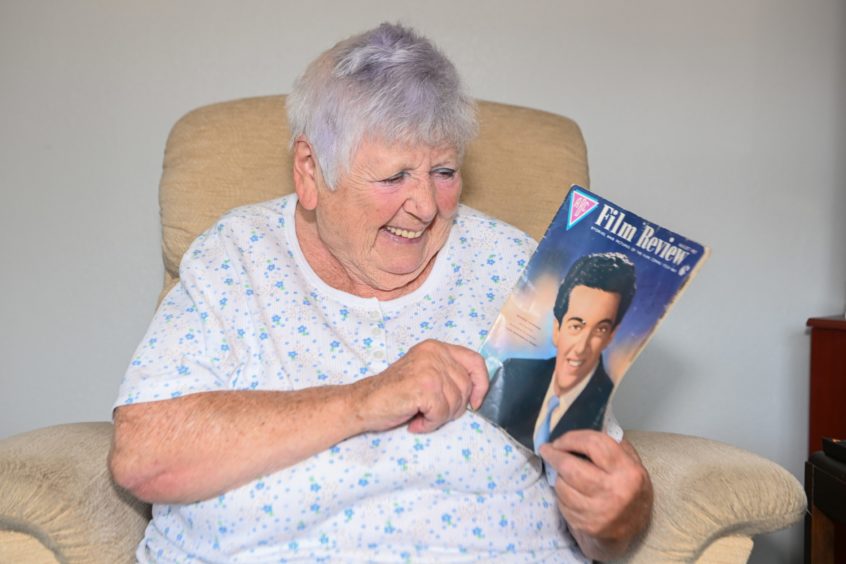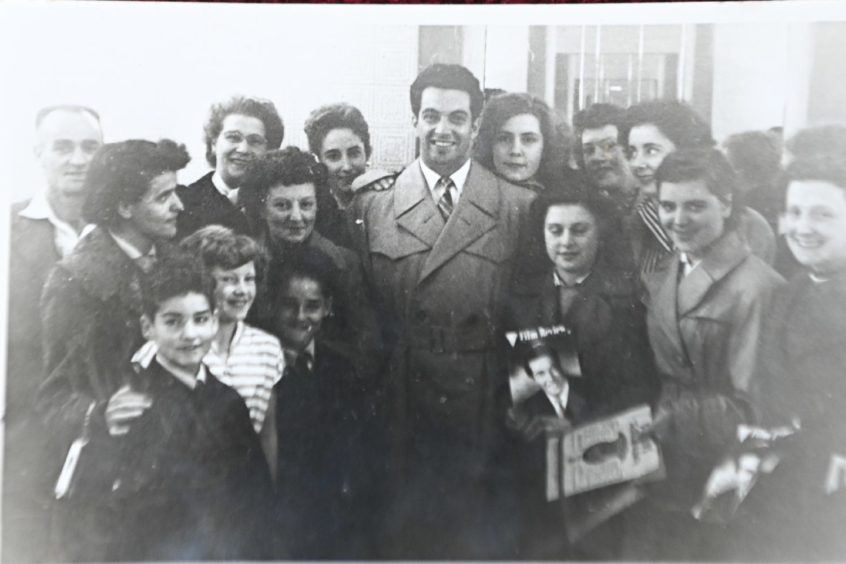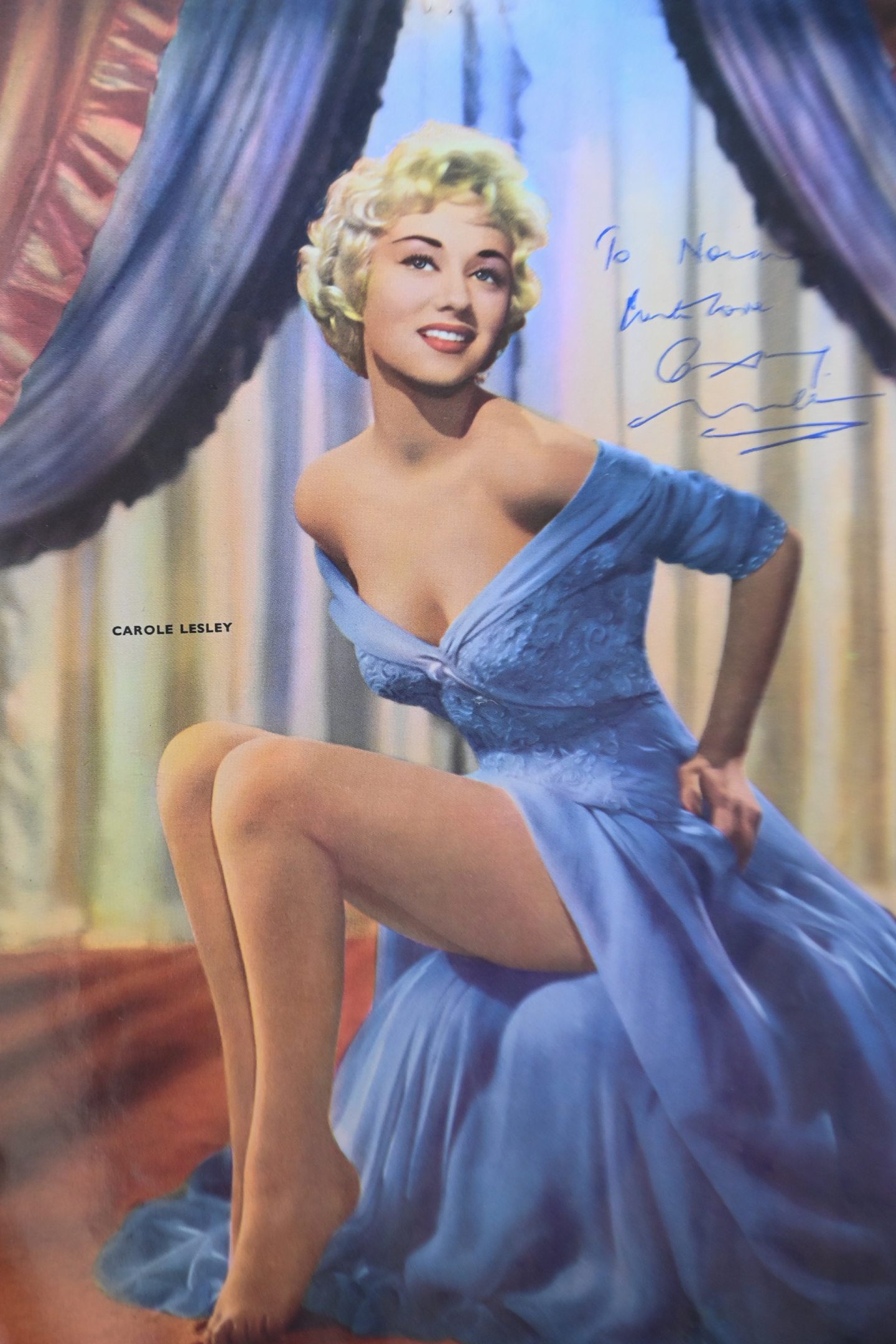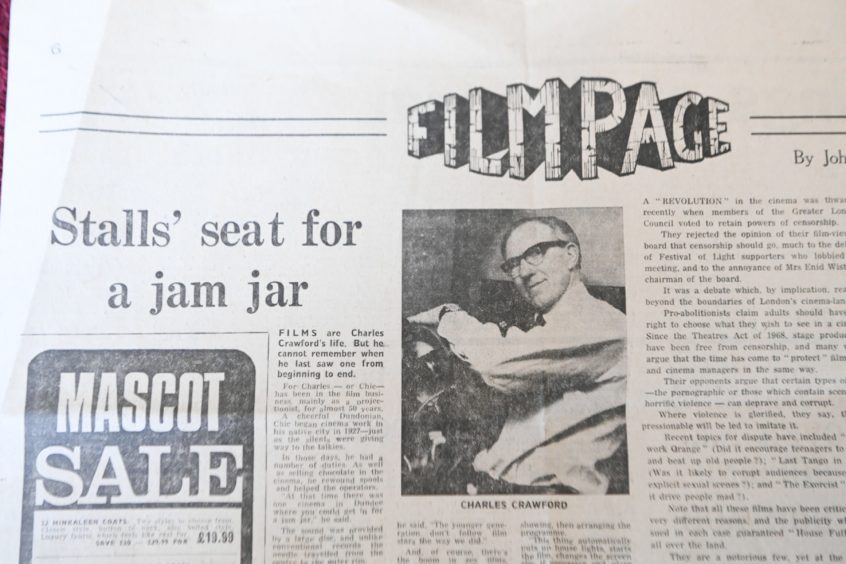There is something wonderfully nostalgic about reading old cinema programmes and discovering how they transported millions of people into mesmerising worlds of intrigue and romance, adventure and fantasy.
Norma Crawford’s late husband, Charles, was involved in projecting magical moving images for more than 50 years in Aberdeen, Arbroath, Montrose and Dundee and when she opened up her cache of memorabilia this week, it highlighted how dramatically these picture palaces have changed during the last century.
After all, when Charles – or Chick, as he was known to his many friends – began working as a projectionist at the age of just 14 in Dundee in the 1930s, talking pictures were regarded as a great technological innovation with Charlie Chaplin, Clark Gable, Laurel and Hardy, Fred Astaire and Greta Garbo among the biggest stars in the firmament.
The message was ‘Silence is Golden’
The young Chick was enthralled by the spectacle, even if there were a few occasions where he had to deal with glitches and gremlins behind the scenes at the filmhouse.
In one instance, he revealed how the operators of a venue came up with a drastic solution to their lack of funds: “I worked in one cinema in Dundee which couldn’t afford to change to ‘talkies’, so the manager put a big sign up which read: ‘Silence is Golden’.”
But, as he climbed up the ladder and became well-known in the business, he quickly adapted to an exciting world where there were 20 cinemas in Aberdeen alone: a thriving environment long before people could afford televisions in their homes.
The young man with a passion for celluloid, who rubbed shoulders with 1950s film star and singer Frankie Vaughan and screened thousands of the greatest films ever made – ranging from Casablanca and Gone With The Wind in the 1930s and 1940s to Cleopatra and The Towering Inferno in the 1960s and 1970s – was so preoccupied with providing customer care that he never watched any of these films while they were being screened.
But, as Norma told us, he was in his element whenever the cinemas were packed, the usherettes had shown the audience members to their seats and it was time for the curtain to come up on the latest piece of Tinseltown entertainment.
She said, at her home in Aberdeen: “Charles just loved being involved with the cinemas across the region and he started out in Dundee, then in Arbroath and Montrose, and it was a huge part of his life.
“He used to pick up the big boxes of films in his car and he would be excited at knowing how much pleasure they gave to so many people.
“Things were completely different then from what they are today and the projectionist needed to be able to work with machinery and think on their feet, but my husband was one of those people who could take something which was broken and make it work.”
Chick died in 2008 from a brain haemorrhage, aged 86, but has left behind a treasure trove of memories of what he regarded as the “golden age of cinema”: a time when Humphrey Bogart and Gary Cooper, James Stewart and Katherine Hepburn weren’t merely actors, but personalities who were treated like royalty wherever they ventured.
And he had previously told us some of the reasons why he was captivated by his role from the outset when, as a teenager, he performed a number of duties including selling chocolate, rewinding spools, helping the operators, and gradually learning the projectionist’s art.
He once recalled: “At that time (in the mid-1930s), there was one cinema in Dundee where you could get in to watch a film for a jam jar.
“One of my first jobs was putting on the records (with the sound) and you needed to have split-second timing to synchronise it with every 10-minute spool.
“Right up to the start of the Second World War, there was a lot of showmanship which wasn’t only attached to the glamorous, heavily-publicised lifestyle of the many stars of the era, but was also evident in the cinemas themselves.
“Our attitude was that the show must go on and it did. I remember, on one occasion, the bottom reel of the projector failed and it was no longer capable of accepting film.
“I had to stand there with the bottom reel in my hand, spinning it round until the reel was completed.
“But you had to do that or you would have disappointed the customers and you have to bear in mind that going to the cinema was a treat for many of them.”
The peak of the cinema boom in Aberdeen was ushered in at the end of the 1930s, with 1939 regarded as the peak year for attendances all around the world.
Little wonder that, with Hitler’s Nazi forces on the move across Europe, audiences sought escapism.
Chick was on hand to respond to the clamour for tickets, and the current Aberdeen lord provost, Barney Crockett, is among those who have studied film history in the city and marvels at how many members of the public were fascinated by the silver screen.
King Kong and the projectionist’s art
He said: “At that time, Aberdeen had the biggest number of cinemas per head of population in Scotland.
“In 1939 there were 20 venues operating at the same time. And there were enough seats in these buildings that everybody could go (to the pictures) one and a half times a week and there would still be enough room.
“The owners of these places used to organise parades down Union Street and they would spend money on a huge scale for advertising.
“For example, you would have a man dressed up as King Kong on the top of the Odeon.
“Then, when they showed the movie Bengal Lancers, they hired real-life cavalry men to dress up and go up and down Union Street to advertise it.”
There was the same determination to stimulate the public when Frankie Vaughan and Carole Leslie – the leads of the film Those Dangerous Years – arrived in Aberdeen in 1957 to mark the launch of the spacious new ABC Cinema, where Chick worked.
Norma recalled: “It was a starry occasion and I stood next to Frankie and had a chat with him and got the autographs of him and Carole on my film programme.
“My husband, as usual, was busy making sure everything would be right for the screening, but there were big crowds that night.
“Frankie was a popular figure, a big star at the time and you could tell he got a very positive reaction from the audience.”
It’s sophisticated and makes new technical demands on any aspiring projectionist.”
Chick Crawford
Nonetheless, tastes were changing by the late 1950s.
Many people now owned television sets and could enjoy watching films in the comfort of their own homes.
In the next decade, just as Chick predicted, the number of cinema-goers diminished significantly.
As he said: “There weren’t the same stars around as you had 20 or 30 years earlier.”
The tide was also shifting in the quality of technology at the projectionist’s disposal. Where once everything had been big and bulky, suddenly small was beautiful.
By the 1970s, two of the projectors were fully automated and, as he explained, the full programme, as much as 17,000 feet of film, could be pieced together on one huge disc.
He said: “Our work is now concentrated on the early part of the week – piecing together the main feature, the commercials and any other film we might be showing.
“This machine automatically puts up house lights, starts the film, changes the screen, size if necessary and plays the music between the programmes.
“It’s sophisticated and makes new technical demands on any aspiring projectionist. The trouble is, there just isn’t the same enthusiasm among youngsters for this type of work.”
Norma, who is 85, clearly thought the world of her other half.
They met – where else? – at the cinema and spent many happy years together, sharing a common interest in the films which graced the venues, all the way through to the “event” movies such as The Towering Inferno, Jaws, Star Wars and Close Encounters Of The Third Kind.
Eventually, after half a century, Chick departed the projectionist’s room for the last time, but had no regrets after bringing entertainment to generations of Aberdonians.
As he said: “The thing which I will enjoy most about retirement is being at home at Christmas and New Year, which I haven’t been able to do for nearly 50 years.
“I’ve enjoyed my life in the cinema, I’ve really enjoyed it. In all the years that I have been here, I have only had to give up a showing once and that was because of a power cut during one of the very severe winters. That’s not a bad record, is it.”
It’s not a small legacy, either.
No wonder that Norma feels proud that films, cinemas and stardust memories were in her beloved Chick’s blood.
More like this:
Eight of the best films shot across the north and north-east of Scotland
Lost cinemas: The rise and fall of Inverness Playhouse
Escape to Victory: Aberdeen FC 80s heroes could have shared the stage with Caine, Stallone and Pele
